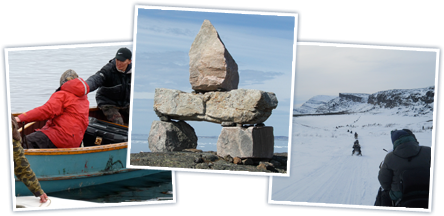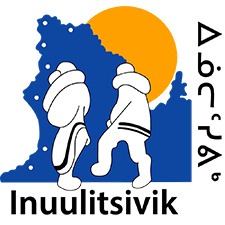
Northern life and Inuit culture
Northern life and Inuit culture
As Canadian Inuit, we are the most recent generation of this 5,000 year cultural heritage that has sustained itself within a vast Arctic territory stretching from the eastern coast of present day Russia, across Alaska, and Canada to the east coast of Greenland.
We are often called “Eskimos” by non-Inuit. However, this is a term we never used. We call ourselves Inuit which means The People.
Our territory stretches about 2,800 kilometers from west to east and has four time zones. South to north, it extends roughly from the tree line north about 3,000 kilometers. These general boundaries enclose approximately 6,000,000 square kilometers of land and offshore territory.
Our territory is not only large, it is also very diverse with many different landscapes, seascapes, climatic zones and ecological systems. It is important to understand that when we refer to our territory, we always mean the sea and the sea ice, fresh water lakes and rivers as well as the land itself.
The diversity of our land is reflected in the diversity of the regions and groups that comprise the Inuit of Canada. Yet at the same time, this diversity is woven together with language and many other cultural features that all of our groups and regions hold in common.
As a culture, Inuit are people of the sea and of the land. Today as throughout our history, the strength and vitality of Inui t culture is anchored to our capacity to use the environments and harvest the wildlife resources from the sea, land and fresh water.
Although hunting will continue as an essential part of our culture, the 41,000 Canadian Inuit are determined to play an increasingly active role in today’s world – politically, culturally and economically. These do not represent two separate worlds or choices of lifestyle, but rather a new and dynamic integration between our capacity to maintain tradition by accommodating change.
